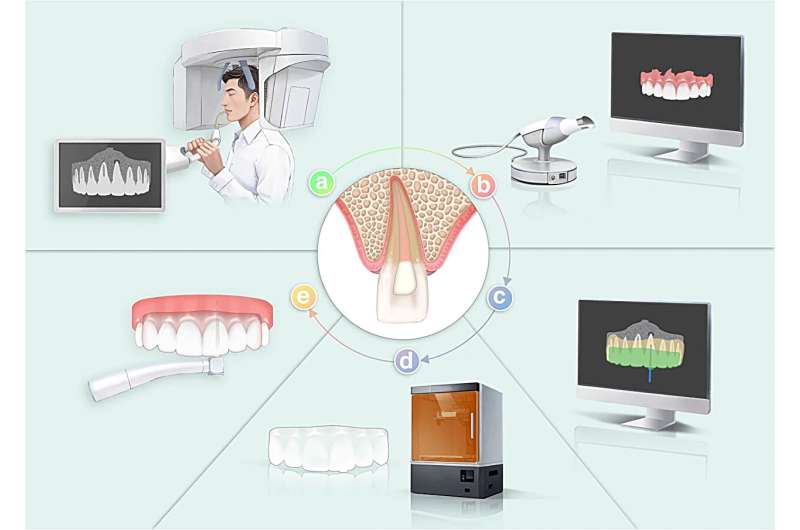This article has been reviewed according to Science X's editorial process and policies. Editors have highlighted the following attributes while ensuring the content's credibility:
fact-checked
proofread
Transforming root canal treatments: The rise of precision dentistry

Endodontic diseases present a significant challenge in dentistry due to their complex nature and the precision required in treatment. Traditionally, the success of these treatments has heavily relied on the dentist's skill and experience. Digital Guided Therapy (DGT) emerges as a transformative solution, leveraging state-of-the-art technology to enhance treatment precision and outcomes.
In a new review published in the International Journal of Oral Science, experts from 13 universities in China unveil the potential of DGT in transforming endodontic treatments. This innovative approach promises enhanced precision, efficiency, and minimal invasiveness, setting a new standard in dental care.
The study fundamentally alters the traditional root canal treatment landscape. By integrating cutting-edge technologies such as advanced imaging, computer-aided design (CAD), and 3D printing, DGT facilitates the execution of highly precise, minimally invasive endodontic procedures.
This research divides DGT into two primary categories: Static Guided Endodontics (SGE) and Dynamic Guided Endodontics (DGE). SGE uses pre-planned drilling guides, produced via 3D printing, to ensure accurate access to the root canal without damaging surrounding tissues. DGE, on the other hand, employs real-time navigation systems, providing live feedback to dentists during the procedure, thereby enhancing the accuracy of treatment.
This dual approach significantly mitigates risks associated with conventional methods, such as perforations or missed canals, by ensuring exact drilling paths and treatment areas. The successful application of DGT in complex cases, as highlighted by the research, showcases its potential to not only improve clinical outcomes but also to reduce patient discomfort and recovery time.
Dr. Junqi Ling, the senior author, states, "Digital Guided Therapy not only marks a significant advancement in endodontics by offering tailored, precise treatment pathways but also significantly reduces the risk associated with traditional procedures."
DGT's application extends beyond conventional treatments, providing a viable solution for historically challenging cases. Its precision and minimally invasive nature not only preserve tooth structure but also enhance patient recovery, setting a new benchmark for endodontic care.
More information: Xi Wei et al, Expert consensus on digital guided therapy for endodontic diseases, International Journal of Oral Science (2023). DOI: 10.1038/s41368-023-00261-0



















